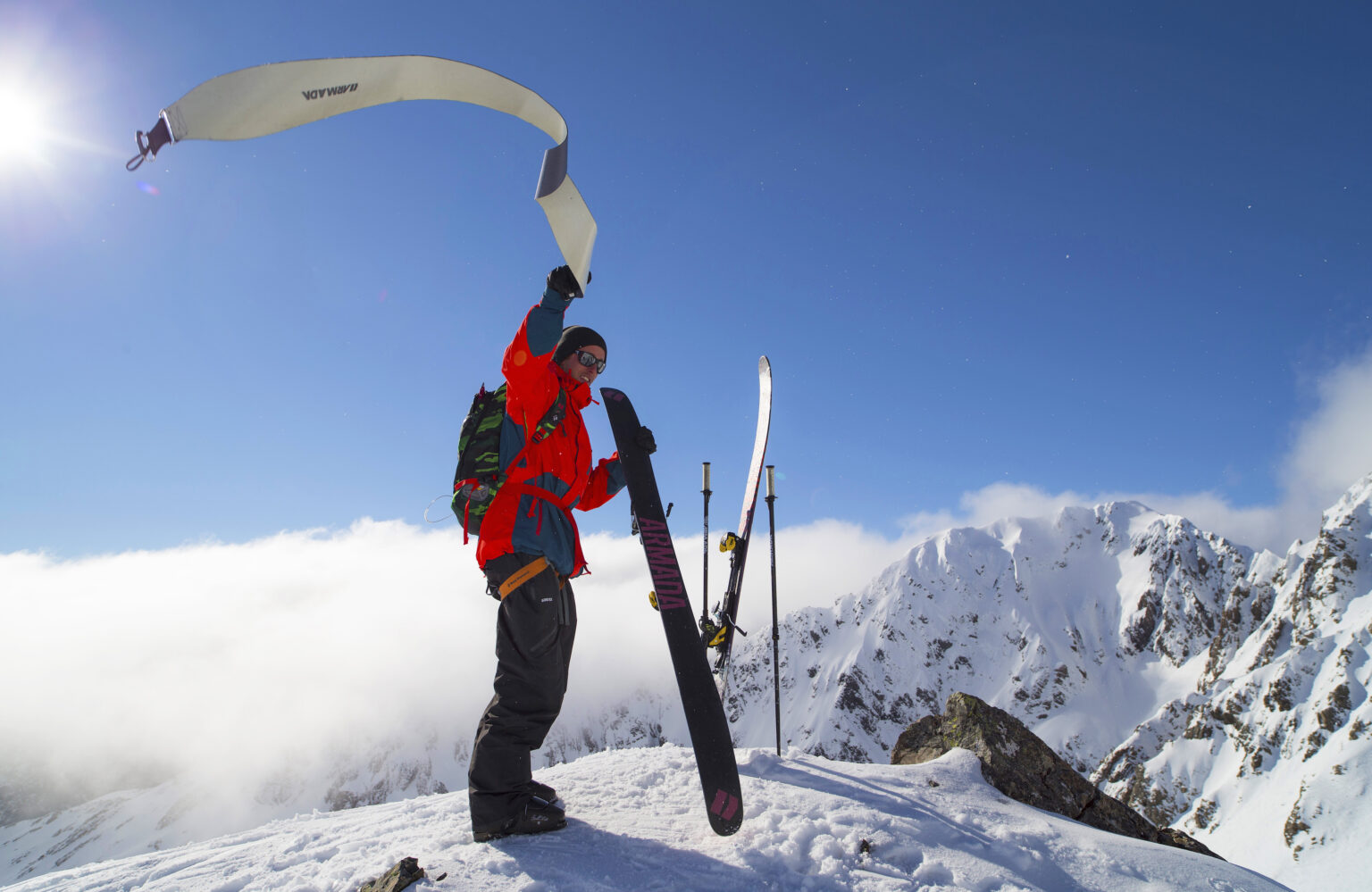Ask Martin Chester: Backcountry Hacks


When it comes to ski touring the devil really is in the details, so all the little tweaks and touches add up to make our days so much better. We are hoping you may all be able to add your own gems to this list, but to get us started, Martin Chester shares some of his favourite backcountry hacks…
Great for removing ice from skins and glue from bases and perfect cleaning up a snowy pin-binding. Even better is a combo scraper and brush but don’t bother with a metal (P-tex) scraper. You can always use the other ski, and use your sharp edges to clean and scrape torn bases, etc.
Have a hand-brush (but ditch the dustpan) in the car – always! Great for brushing boot soles and ski bindings clear of snow before you load them up and it all melts.
Rather than carrying a whole roll, how’s about wrapping a stash of tape around your ski poles or thermos flask, for when you need a quick strip of it in a hurry.
If you like a long grip (for traverses, etc.) but are not so keen on a fat ski pole (or would like to be able to hold both poles in one hand) then use squash racket handle tape, or bike handlebar tape, to wrap a grip down your favourite poles.
Want to prevent and fix that annoying build-up of snow and ice on your skins? Carry a block of BD Glop Stopper.
. I am a massive fan of cable (or zip) ties in my repair kit. Buy a range of lengths and make sure you have some that are long (and sturdy) enough. If you shop around, you’ll find heavy-duty zip ties that are plastic coated metal – way less likely to cut on sharp ski edges, or snap in colder temperatures!
Carry a small bag of everyday items (e.g. paracetamol, plasters and Compeed patches) in a separate pouch to your first aid kit. Then keep it in the lid or top of your pack. That way you can leave the bandages and wound dressings (and all the stuff you hope never to use) at the base of your pack – and they won’t get damp when you just need to get a simple plaster or blister patch out.
…or a rehearsed plan for clipping the bindings for glacier travel – otherwise there is some serious fuzzy logic of carrying all those crevasse rescue gizmos but no idea how to prevent dropping your planks down the slot!
Skiing through serious terrain in poor visibility? Duct tape a drinking bottle to the end of your probe, and feel your way around any crevasses, corniced edges, etc.
In the mist or flat light, fix a 10m length of cord (Petzl RAD line is ideal) to the end of your ski pole like a fishing line. Add a knot and krab at the end for a bit of weight, then cast the line ahead of you to judge the gradient in the mist or fog.
When skiing in poor visibility and whiteouts, I drag my uphill pole as wide, but as softly, as I can. Hold it as gently as possible (between forefinger and thumb, rather than full fist) to prevent it messing with your balance. This enables you to feel the gradient across a couple of metres, rather than just a ski width – so you can judge each turn a little better.
They all look the same, they all get stuck together, then people take the wrong ones. Keep your skins to yourself and dry them elsewhere (slowly).
To avoid a kit explosion scatter-mare, develop some neat and tidy habits for arriving at huts: I always try to go for one peg, one basket, and a routine I can easily reverse in the dark the next morning.
Initials in marker pen on your shells are a good start – but not enough. Do something to your boots that make them uniquely and obviously yours. For example, I try to Velcro my straps together round the back of the drying rack; or put my insoles in the cuff, to get in the way. Anything to stop some bleary-eyed member of another team (with rental boots they barely recognise) accidentally pulling my boots off the rack and putting them on. Trust me – it happens!
In a busy hut, I make sure my team put all their poles and axes in the same place. Then we put a sling or ski strap around the lot. Once again, it saves them getting mixed up in the melee of a dawn start.
Let’s be honest, you probably only need this to find the hut toilet, so get a tiny torch with a red light options to avoid waking up the entire dorm (and blinding yourself) in the middle of the night – ie Petzl Bindi or Black Diamond Flare.
Buy lots and make sure you always have them! I bulk buy 3M foam plugs from Amazon.
Carry a small pack of handy wipes on every hut trip – especially good for huts without running water! More important than ever in our post-pandemic hut sharing.
The rest of the world does not seem to share our enthusiasm for massive bulky plugs. Buy a teeny-tiny euro-fitting (two-pin) USB charger to save oodles of weight and space.